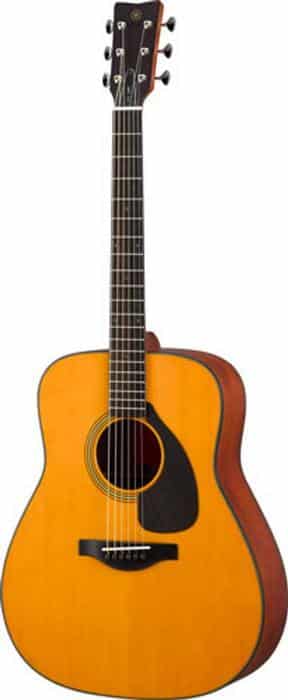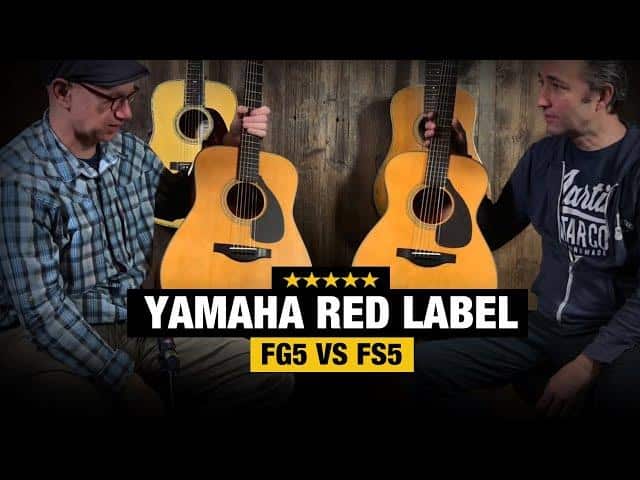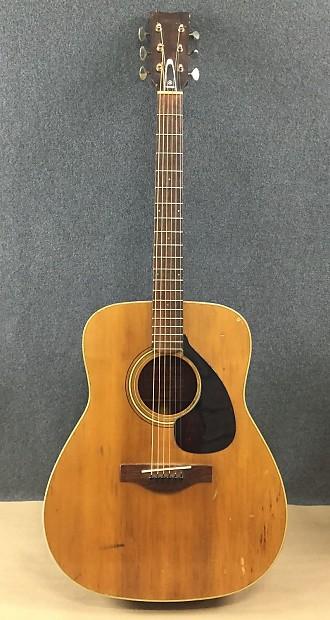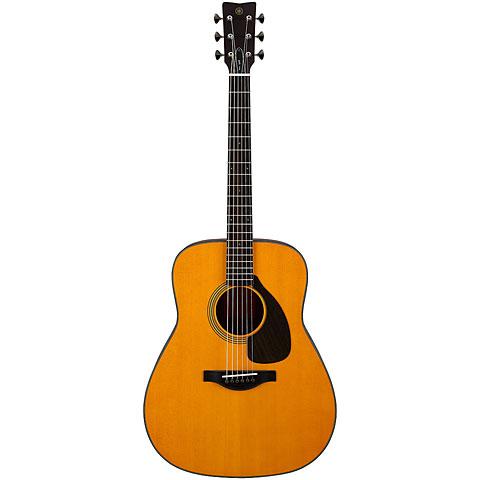Imagine the year 1966 – the intoxicating resonance of an emerging Yamaha Red Label guitar booms through the crowd at the Woodstock Festival, creating magic in the world of music, that’s soon to profoundly reshape the history of acoustic guitars. It’s the beginning of a saga…
As your guide to this nostalgic journey, Michael Brown, a noted guitar journalist and acoustic aficionado, I have a tantalizing revelation for you: seemingly humble, this alluring piece of craftsmanship, the Yamaha Red Label, is in fact, rooted in an intricate legacy that truly positions it as an unsung hero in the sphere of guitars. We will delve deeper into this claim, unveiling the fascinating secrets that lend to Red Label’s distinct charm and longevity.
Join me on this captivating journey, as we explore the legacy of Yamaha Red Label, and understand why this beautiful instrument just might be the next significant addition to your collection.
The History of Yamaha Red Label
Origin & Evolution

Having journeyed through the evolution of numerous guitar series, I find the origins and evolution of the Yamaha Red Label, particularly the FG Series, to be truly compelling. The origin of Yamaha’s Red Label starts in the late 1960s in Japan with the advent of the FG series, mainly FG-110 and the FG-140. Each model showcased Yamaha’s commitment to impeccable craftsmanship and sound quality.
As the 1970s dawned, so did models like the FG-150, FG-160, FG-180 and the FG-300. Each successor in the series brought refined enhancements in material and design, creating a tangible difference in sound quality and playability. This paved the way for future Yamaha acoustic guitars.
By documenting the exact nature of each evolution, we can fully appreciate the contribution of the Yamaha Red Label series. As we later explore its popularity at events like Woodstock, these developments will become more relevant, providing a layered understanding of its enduring appeal.
Popularity with Woodstock and Country Joe

Transitioning from the origins of the Yamaha Red Label, we arrive at its spotlight moment – the era of Woodstock and Country Joe. Having covered major music festivals over my career, I can attest to the indomitable influence these events, particularly Woodstock, have on the guitar industry. The Yamaha Red Label’s prominence during this period affirmed its sound and craftsmanship. Country Joe, a key player at Woodstock, was a notable player of this series, forging an indelible association that lives on today.
The rich, unique tones from a Red Label became synonymous with the iconic sounds resonating out of Woodstock. In essence, these guitars, adored by Country Joe and many others, were an integral part of the soundtrack to a generation. Their popularity during this pivotal period speaks volumes about their quality, standing as a testament to Yamaha Red Label’s remarkable journey in the world of music.
Comparing Yamaha Red Label with Other Guitars

As we delve further into the realm of Yamaha Red Label guitars, the question invariably rises. How does the Yamaha Red Label stand up against other iconic models? My years of experience with Guitar Player magazine have allowed me to encounter and assess innumerable guitar models. Through that lens of expertise, I can assuredly declare that the Yamaha Red Label truly holds its own amidst a sea of renowned models.
When you start a comparison, the FG180 is a natural first contrast due to its classic status. Yet, there’s an unmistakable boldness and dynamism that the Red Label exhibits – a combination of the richness in tone and the distinctive playability – setting it apart uniquely. Then arrive the likes of FGX5 and FG5; their unquestionable brilliance is met and matched by the Red Label’s uncompromising build quality and iconic sound.
Let’s not forget the FS5, beloved for its bright, clear sound, it presents tough competition. But again, the Red Label’s warmth and sustain, inherent in its construction and design, make for a striking counterpart not easily overshadowed. Thus, when placed alongside guitars of such gravitas, the Yamaha Red Label doesn’t just survive, it thrives.
This comparison not only attests to the Red Label’s unique sound and incomparable quality but also heralds what we’re about to explore next – the singular attributes that make Yamaha Red Label an irresistible choice for guitar enthusiasts.
What Makes Yamaha Red Label Stand Out

Throughout my formidable career spanning decades, I’ve witnessed the evolution and fluctuations of guitar components from a unique vantage point. The Yamaha Red Label, with its signature value and artfully chosen components, never fails to captivate me. It’s more than just another guitar but a tale of craftmanship and dedication.
So, what’s the secret behind the Yamaha Red Label’s enduring charm and quality? Allow me to pull back the curtain on this well-kept secret. One of the pivotal factors is the torrified top. This heat-treating process crystallizes the resins in the wood, significantly enhancing the resonance and rich tone. It infuses the guitar with an aged, played-in sound that usually takes years to achieve. This is coupled with a semi-gloss finish, giving it a vintage appeal that’s visually enchanting.
The melding of stunning aesthetics with peerless practicality doesn’t end there. A standout feature is the ebony fretboard, preferred for its hard, smooth surface and striking appearance. Compound this with bone nut and saddle, these components meticulously boost sustain and improve tone distribution. Few things can truly reflect a musician’s soul like the carefully chosen components of their beloved instrument.
The sheer thoughtful design extends to the truss rods. These adjustable rods allow you to tweak the neck’s curvature, ensuring optimal action and playability. It’s a feature that assures longevity and performance, adding value in more ways than one.
In my eyes, the allure of Yamaha Red Label is intricately tied to its nuanced blend of history, craftsmanship, and innovation. The components harmonically resonate together, offering a uniquely visceral, tactile, and auditory experience. Captured in every rustle of the strings and rhythm of the fretboard lays the precision and expertise that went into its creation.
Guidance for Purchasing Yamaha Red Label

So, you’ve heard tales of the legendary Yamaha Red Label, and you’re itching to own one. Navigating the guitar market can be tricky, but fear not! Drawing on my years of industry experience, I’m here to guide you through the process.
Looking to add a timeless classic to your collection? Wondering how to make the best purchase decision? It all comes down to understanding what sets the Yamaha Red Label apart. Here’s the charm: unlike mass-produced models, every Yamaha Red Label guitar carries a unique sonic signature. Remember, purchasing such an instrument isn’t just about aesthetics; it’s also about the inherent value you obtain as a player.
When choosing your guitar, you need to consider crucial factors like the setup, the condition of the guitar neck, and of course, the sound. Play a few chords, feel the distinct tone resonate – that feeling is what you’re investing in. This interaction would give you the best idea if that specific guitar is the right choice for you.
In conclusion, purchasing a Yamaha Red Label guitar isn’t about chasing a label; it’s about the value and the unique music experience that it brings to you. And remember, the key to nailing your purchase is patience and research. Happy strumming!
Frequently Asked Questions
What is the origin of the Yamaha Red Label Guitar?
How does the Yamaha Red Label compare to other guitars?
What should I consider when buying a Yamaha Red Label guitar?
Conclusion
So, how can understanding the Yamaha Red Label’s past shape its future and your musical journey? Time to wrap up this in-depth exploration. As we’ve traced the robust history of the Yamaha Red Label, its essence resonates stronger now. It stands a testament to the timeless appeal of durability, budget-friendliness, and superior sound quality.
From its humble origins to stealing the show at Woodstock with Country Joe, it has truly seen it all. Comparisons with other guitars highlight both its heritage and present value. It continues to stand out for its unique timber, tonal excellence and versatile playability.
My years as a guitar journalist have underlined why classics like this thrive. Based on our exploration, making an informed purchase of a Yamaha Red Label should now be within your reach. Remember, the guitar you choose is more than an instrument; it’s an extension of your musical soul.